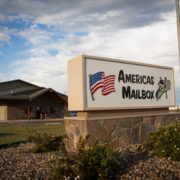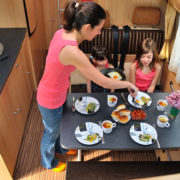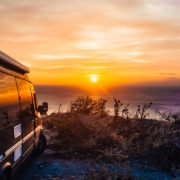RV Must do Trip: The Badlands of South Dakota
Taking an RV trip to the famous badlands of South Dakota would make you understand why the earlier settlers and American Indians referred to the regions as the badlands. The areas are extremely dry, unbearably hot all through the summer, rough, secluded and hard to get around. However, even as these descriptions make it seem like an unwelcoming destination to have your home, in recent times the Badlands has become a fascinating destination for great RV trips.
The Badlands has a National Park which shields great acres of distinctly eroded hills and peaks in addition to the best diverse grass prairie across the country. There is an unusually rough magnificence in this place similar to none other in The United States. You can find bison; bighorn sheep and prairie dogs in the park, in most instances you’ll find them at shockingly close distance but one must be snake conscious.
The Badlands were obviously a creation of the geologic process of erosion and deposition of sediments which started some 69 million years in the past when the sea stretched across the Impressive Plains. Following the sea retreat the land areas, which include rivers and flood plains, continue to put sediments. While the main period of the deposition ended some 28 million years back, erosion of the Badlands could not start until only half a million years ago. Erosion never stops to carve the Badlands buttes till this day. Ultimately, the Badlands would probably wear away completely one day.
During the Dinosaurs age a low sea shielded the Great Plains including the Badlands this accounts for the reason the Badlands is known as one of the world’s most abundant fossil beds. Because dinosaurs were land beasts, no fossils of them would be seen in the park. Huge sea lizards known as mosasaurs also swam in this centuries-old sea, together with sea turtles and a wide species of fish.
The park is accessible 365 day a year. Heat can sometimes reach unbearable levels in the daytime. So it advisable to plan any hiking and bike riding in the morning hours. The badlands are obviously a photographer’s Ideal destination. The craggy spires and open areas apparently seem like a new site with the rising and the setting of the sun. Sunrises and sunsets in the badlands are amazing. You’ll have to commit up to 3 days and some nights if you want to have a great view of the park.
Reaching the Badlands is not difficult. There are actually three campgrounds to choose from. Two of which are managed by the National Park Service:
Cedar Pass campground has close to a hundred level sites with striking views and sights of the badlands formations. The campground is just a stone throw from the Ben Reifel Visitor Center, The fee per campsite range from $18 for site without electrical hook ups and $30 for site with electrical hook-ups. Water, toilets plus a dump station and picnic tables are provided.
Sage Creek is also a great campground. You might probably see animals that look like extinct species moving about. The campground is situated near the Wilderness Area of the Badlands. You can easily get access through an unpaved road that could be sometimes close especially after the spring rain or winter storms. There are limited turnarounds on this road especially for large RV’s.
The White River KOA campground is a great spot in the Badlands positioned in a serene, rural area with lots of huge shade trees at the side of the White River. The campground has a vast dirt road close by which is great for biking. The campground shade is as fascinating as the swimming pool.











Leave a Reply
Want to join the discussion?Feel free to contribute!